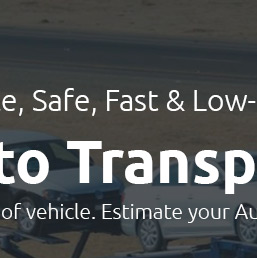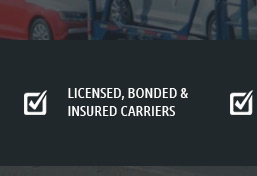 |
|
||||
 |
 |
 |
 |
||
 |
 |
|||||
 |
 |
 |
 |
 |
 |
 |
||
 |
 |
 |
 |
 |
 |
 |
 |
 |
 |
 |
|
 |
How to Ship a Vehicle: A Comprehensive GuideShipping a vehicle, whether for a move across the country or a sale to a distant buyer, requires a blend of meticulous planning and informed decision-making. The process, although seemingly daunting, can be navigated with ease when one is equipped with the right knowledge and insights. Understanding the Basics At the core of vehicle shipping lies the choice between two primary methods: open transport and enclosed transport. Open transport, which is the more cost-effective option, involves shipping the vehicle on an open trailer, exposing it to the elements. On the other hand, enclosed transport offers protection from weather and road debris, making it a preferred choice for luxury, vintage, or high-value cars, albeit at a higher cost. Selecting a Shipping Company Choosing a reliable shipping company is paramount. It's advisable to research and compare companies based on reviews, pricing, and services offered. A company with a solid reputation often provides peace of mind, as they are likely to handle the vehicle with care. Obtaining multiple quotes can also shed light on the going rates and help in making an informed decision. One must not solely focus on the cost but also consider factors such as insurance coverage and delivery times. Preparing Your Vehicle for Shipping Proper preparation of the vehicle is crucial for a smooth shipping experience. This includes cleaning the car inside and out, which not only makes it easier to inspect for pre-existing damage but also helps prevent dirt and debris from causing scratches during transit. Removing personal items and securing loose parts or accessories can avert potential complications. Ensuring that the vehicle's battery is charged and tires are properly inflated will facilitate the loading and unloading processes. The Shipping Process Understanding the shipping process can alleviate much of the stress associated with vehicle transport. Typically, after selecting a shipping company and preparing the vehicle, the next step involves scheduling a pickup date. It's worth noting that flexibility with dates can sometimes lead to better pricing. Once the vehicle is picked up, tracking its journey through the shipping company's system offers reassurance and updates on its estimated arrival. Delivery and Post-Shipping Considerations Upon delivery, it's prudent to conduct a thorough inspection of the vehicle. This inspection should be compared against the original condition report to identify any new damage that may have occurred during transit. In the rare event of damage, having comprehensive insurance through the shipping company can be a financial safeguard. Feedback on the shipping experience can also aid others in their decision-making process, contributing to the community of vehicle shippers. Pros and Cons of Shipping a Vehicle Shipping a vehicle comes with its own set of advantages and disadvantages. The convenience of having the vehicle transported without accruing additional mileage or wear and tear is a significant benefit. However, the cost associated with shipping, particularly for enclosed transport, can be a deterrent for some. Weighing these pros and cons is essential to decide whether shipping or driving the vehicle to its destination is the more viable option. In conclusion, the process of shipping a vehicle, though intricate, becomes manageable with proper preparation and the right choices. By understanding the various aspects involved, from selecting the appropriate transport method to preparing the vehicle and choosing a reliable shipping company, one can ensure a successful and stress-free experience. Whether it's for personal relocation, a sale, or just the desire to protect a cherished automobile, vehicle shipping remains a viable and efficient option in today's interconnected world. https://www.reddit.com/r/projectcar/comments/1191wan/shipping_car_cross_country_requesting_advice_on/
If you're shipping long-haul (2000-3000 miles), carrier's rates should range from about $0.35 to $0.45 per mile, but more is always better for them. https://shipacardirect.com/car-transport-to-from-california/?srsltid=AfmBOoox-nq4oxPAF54dB_XSkmRmML7ZajezhN0x0P_ODdKz2eR13wis
We meet all of the criteria for professional car shipping to and from California. We review thousands of carriers and weed out the ones that do not meet our ... https://www.progressive.com/answers/how-to-ship-a-car/
Start by researching transport companies and getting cost estimates. Most car shipping companies charge by the mile and provide open or closed transport.
|
